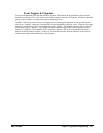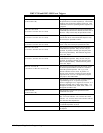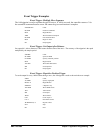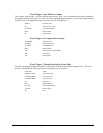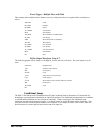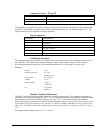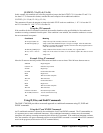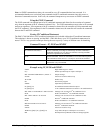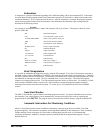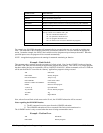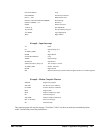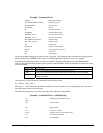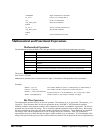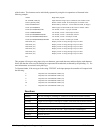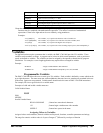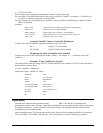
DMC-1700/1800 Chapter 7 Application Programming • 149
Subroutines
A subroutine is a group of instructions beginning with a label and ending with an end command (EN). Subroutines
are called from the main program with the jump subroutine instruction JS, followed by a label or line number, and
conditional statement. Up to 8 subroutines can be nested. After the subroutine is executed, the program sequencer
returns to the program location where the subroutine was called unless the subroutine stack is manipulated as
described in the following section.
Example:
An example of a subroutine to draw a square 500 counts per side is given below. The square is drawn at vector
position 1000,1000.
#M Begin Main Program
CB1 Clear Output Bit 1 (pick up pen)
VP 1000,1000;LE;BGS Define vector position; move pen
AMS Wait for after motion trippoint
SB1 Set Output Bit 1 (put down pen)
JS #Square;CB1 Jump to square subroutine
EN End Main Program
#Square Square subroutine
V1=500;JS #L Define length of side
V1=-V1;JS #L Switch direction
EN End subroutine
#L;PR V1,V1;BGX Define X,Y; Begin X
AMX;BGY;AMY After motion on X, Begin Y
EN End subroutine
Stack Manipulation
It is possible to manipulate the subroutine stack by using the ZS command. Every time a JS instruction, interrupt or
automatic routine (such as #POSERR or #LIMSWI) is executed, the subroutine stack is incremented by 1. Normally
the stack is restored with an EN instruction. Occasionally it is desirable not to return back to the program line where
the subroutine or interrupt was called. The ZS1 command clears 1 level of the stack. This allows the program
sequencer to continue to the next line. The ZS0 command resets the stack to its initial value. For example, if a limit
occurs and the #LIMSWI routine is executed, it is often desirable to restart the program sequence instead of
returning to the location where the limit occurred. To do this, give a ZS command at the end of the #LIMSWI
routine.
Auto-Start Routine
The DMC-1700/1800 has a special label for automatic program execution. A program which has been saved into
the controller’s non-volatile memory can be automatically executed upon power up or reset by beginning the
program with the label
#AUTO. The program must be saved into non-volatile memory using the command, BP.
Automatic Subroutines for Monitoring Conditions
Often it is desirable to monitor certain conditions continuously without tying up the host or DMC-1700/1800
program sequences. The controller can monitor several important conditions in the background. These conditions
include checking for the occurrence of a limit switch, a defined input, position error, or a command error.
Automatic monitoring is enabled by inserting a special, predefined label in the applications program. The pre-
defined labels are:



